Bryan Pearson's Blog, page 53
November 7, 2012
November 7: Loyalty Links & Likes
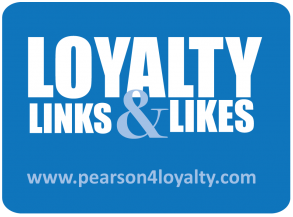 Here are a few loyalty links that caught my eye this week.
Here are a few loyalty links that caught my eye this week.
1. 4 Apps for Increasing Customer Loyalty — Entrepreneur
The author really digs into the pros and cons of four apps relating to customer loyalty.
2. A Surprising Trick for Building Brand Loyalty — Forbes
Surprise marketing can build loyalty. This story discusses its appeal.
3. Save money with customer rewards programs — The Christian Science Monitor
The story reveals how to sign up for rewards programs without getting buried in spam and it offers more rewards program insights.
4. How OrderGroove Brings The Subscription Model, Customer Loyalty To Big Brands — Fast Company
Monthly subscriptions offer an outlet for loyal customers to cash in. I’m sharing because the story mentions some big brands embracing the subscription model.
5. iPhone User Loyalty Declines For The First Time Ever (But It’s No Big Deal) — Huffington Post
A recent report shows customer loyalty with Apple has decreased. This story highlights the loyalty of Apple customers and brushes off the report.
November 5, 2012
Delivering Loyalty: 10 Lessons I learned From Zappos.com
Zappos.com is more than an electronic shoe store. It is a supportive community that happens to put you in a pair of great-looking shoes.
Somewhere in creating what is now one of the leading online retailers, founder Tony Hsieh established a state of mind – and ideal stemming from his own pursuit of happiness. Today, with 8 million products in inventory – from shoes to apparel – Zappos.com ships more than $1 billion in merchandise annually, each sent with the sole mission of delivering the same happiness.
I was lucky enough to take a guided tour of Zappos’ headquarters and call center on a recent trip to Las Vegas, and I left practically dizzy, not only from the sensory overload, but from the brilliance of the company’s customer engagement philosophy. In essence, Zappos generates loyalty by being loyal – to its customers, its community, its shareholders and its staff.
1. Zappos makes it easy
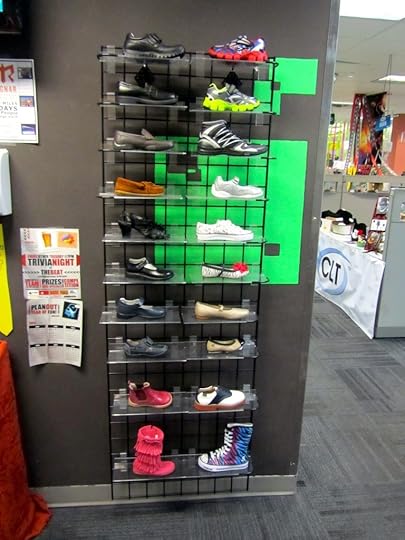
By eliminating shipping fees on returns, Zappos has removed one of the main barriers to ordering shoes online: size. Not only can shoppers order several different sizes and then send the misfits back for free, Zappos’ call center employees encourage it. The company also issues 1,000 return labels daily for customers who can’t print them online.
2. Zappos doesn’t leave you waiting

Zappos executives intentionally decided to build their central warehouse in Louisville, Ky., so that it could be strategically located directly next to one of the nation’s largest UPS facilities. Every UPS package passes through this location, so by being next door, each Zappos.com order arrives at the customer’s doorstep within two days.
3. Full of surprises
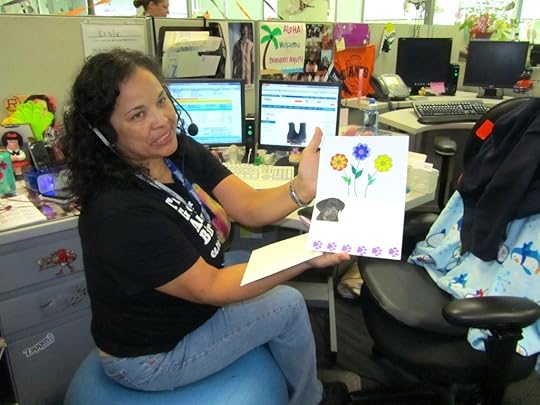
The Zappos team is given complete freedom to do whatever they think is necessary to create a PEC (personal emotional connection) with every customer. This often means they extend creative signs of appreciation, from waived shipping fees to a bouquet of flowers. During our tour, I came across a call center employee in the midst of creating a card for a customer who said her dog was going into surgery.
4. Makes heroes of its employees
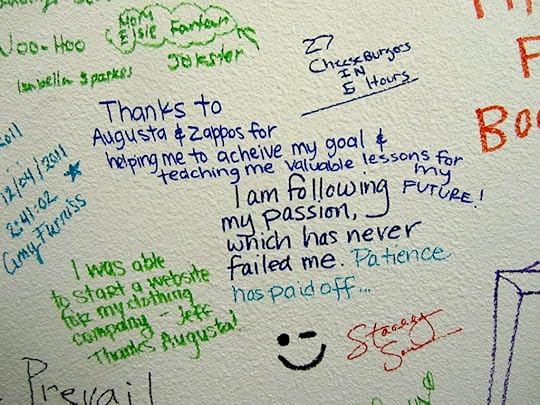
Three key components shape the employee experience at Zappos: trust, empowerment and compassion. Zappos gives its employees free rein to make their own customer service decisions, even if that means spending hours with one caller. An on-staff life coach, meantime, works with all employees to set and achieve both personal and professional goals.
5. Zappos knows its customers
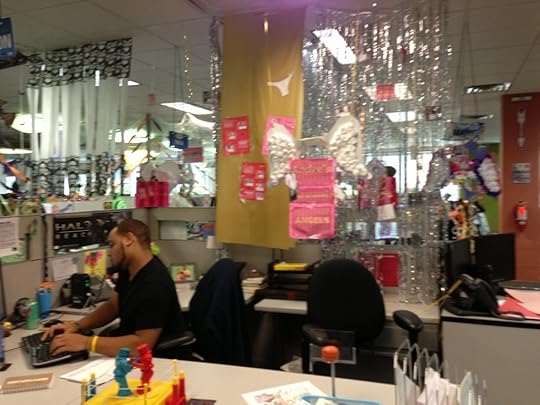
Zappos employs many of the tactics required to better understand and appreciate its customers. For instance, separate teams are assigned to handle calls, email, live chat and returns. The company is also experimenting with routing its customer calls based on area codes, enabling its agents to specialize in geographic regions.
6. Zappos s hares
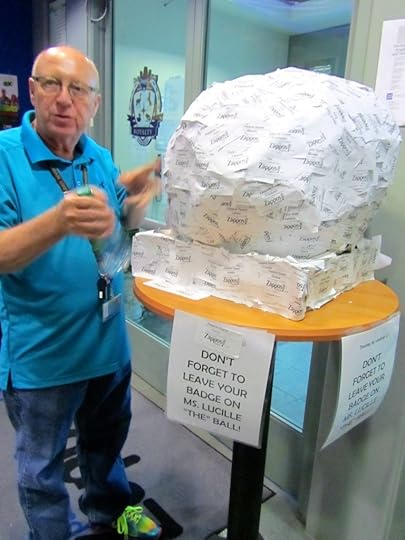
At Zappos Insights, outside organizations are taught how to improve their culture, their call centers and their customer experience. The basic tours of the Las Vegas headquarters are free, and attract 15,000 people each year. For an added fee ranging from $47 to $4,000 per person, Zappos offers everything from a Q&A with its Insights Team to a full day of training, plus coaching, with various key departments.
7. Zappos gives back
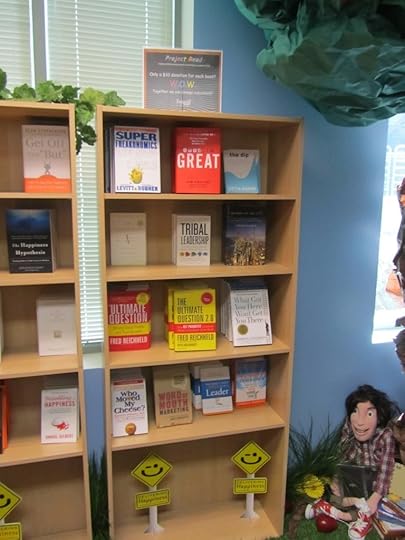
Tony Hsieh grabbed headlines when he announced that Zappos would relocate its headquarters to downtown Las Vegas – on his dime. The CEO is investing $350 million of his own money in downtown Las Vegas. Further, programs such as Project Read encourage donations to support important causes. Contributors can take a book for their $10 donation, which Zappos doubles.
8. Zappos recognizes the VIP
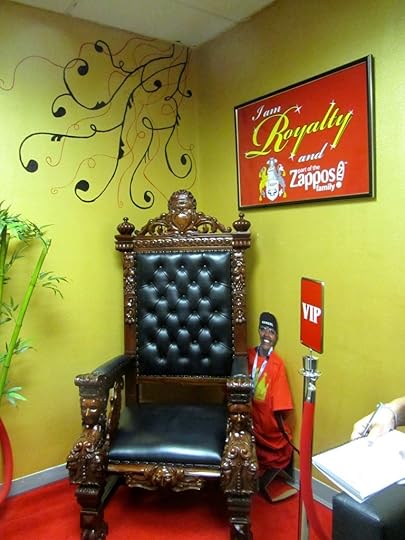
Zappos does not operate a loyalty program, but it has launched its VIP program to recognize especially loyal customers. VIP customers get free next business-day shipping on all of orders; they are pushed to the front of the line when call volume is heavy; and are sent email notifications when “hot” merchandise comes in. But be patient, there is a waiting list to join.
9. Zappos comes to its vendors
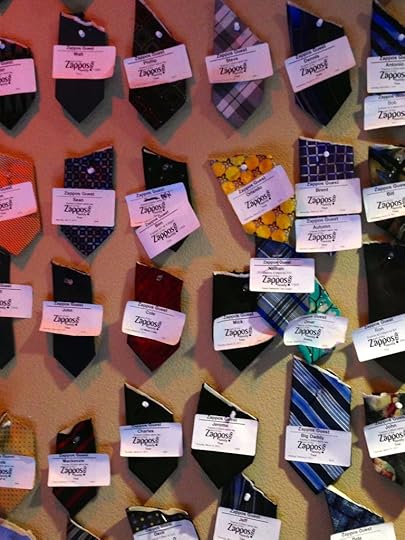
Zappos knows that business travel can be a grind, so it applies the same service that distinguishes its customer relations to its vendor partners. The company provides a fleet of transportation to shuttle vendors and suppliers from the airport to headquarters – by way of 17 shuttles or cars, a golf cart or a tractor. But take note: At Zappos, no ties allowed.
10. The Zappos Core Values

Rather than adhering to a mission statement, Zappos sets its moral compass to 10 core values, such as ”Be humble,” “Deliver WOW through service,” and “Be Passionate and Determined.” These core values were actually culled down from an original list of 30 such values, all of which were submitted by employees.
October 31, 2012
October 31: Loyalty Links & Likes
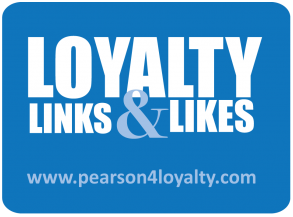 Here are a few loyalty links that caught my eye this week.
Here are a few loyalty links that caught my eye this week.
1. Three Initiatives for Motivating Loyalty Members — PROMO
Consumer engagement with loyalty programs is declining, this article offers advice on how to curb the trend.
2. Forget the E-Wallet — It’s Apple’s Passbook That Will Transform Retail — AdAge
The author discusses the implications of Apple’s Passbook for loyalty programs.
3. Loyalty Programs Get Way Out Of Hand — Forbes
Here’s another look at what happens when loyalty programs go bad.
4. Know Your Customers Wherever They Are — Harvard Business Review
I’m sharing because the story emphasizes getting to know customers through data and provides four keys to tracking today’s multichannel customers.
5. 6 Tips for Social Media Customer Service — 1to1 Media
A recent report links social media engagement and ROI. This article shares helpful hints on how to gain customer loyalty through the money-making social media channels.
October 29, 2012
The Social Media Payoff: Putting Money Where Your WOM Is
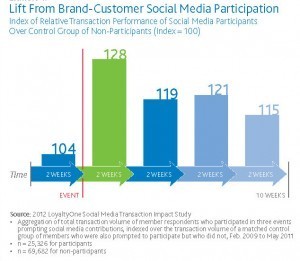 For years, marketers have tried to put a dollar value on a “like.” That figure may still be elusive, but we do now have an idea of what a social media message translates to in improved sales, and it’s in the double digits.
For years, marketers have tried to put a dollar value on a “like.” That figure may still be elusive, but we do now have an idea of what a social media message translates to in improved sales, and it’s in the double digits.
Recent research by LoyaltyOne, conducted with Northwestern University and The University of Western Ontario’s Ivey School of Business, delivers hard evidence that consumers who interact with a brand through social media do spend more with that brand – immediately and in the long term.
The findings are based on a two-year analysis of social media engagement and actual transactional data among Canada’s more than 10-million member AIR MILES Reward Program. What it shows is that AIR MILES members who participated in social media events and promotions increased their purchases among AIR MILES partners by 15 percent to 30 percent over non-participants.
The implications are incredibly encouraging for organizations that have long wondered if their social media investments are paying off. Today, with so many brands competing for the consumer’s limited attention, making that connection is critical to sustained growth.
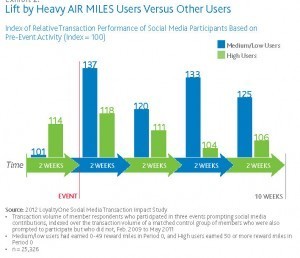 But translating those social interactions to actual sales depends largely on the mission and the messaging. Here are a few high lights of the study:
But translating those social interactions to actual sales depends largely on the mission and the messaging. Here are a few high lights of the study:
•The simple act of writing a short public statement on a social media site spurs significant lifts in transaction activity;
• Longer, more elaborate posts about redemption experiences (such as through hospitality or entertainment) created higher lift than shorter, product-based posts;
•The biggest lift created through social media engagement is found in high-potential customers who are not yet fully engaged with the brand.
Lastly, the biggest mistake marketers can make is using social media strictly as a means of communication. Social media is a powerful, expanding channel that should be used to encourage participation in contests, games, causes and other activities that reinforce the brand’s value among consumers. This is the kind of brand engagement drives subsequent transactions.
To see the full report, “The Social Media Payoff,” visit here.
The Social Media Payoff: Pulling Money Where Your WOM Is
 For years, marketers have tried to put a dollar value on a “like.” That figure may still be elusive, but we do now have an idea of what a social media message translates to in improved sales, and it’s in the double digits.
For years, marketers have tried to put a dollar value on a “like.” That figure may still be elusive, but we do now have an idea of what a social media message translates to in improved sales, and it’s in the double digits.
Recent research by LoyaltyOne, conducted with Northwestern University and The University of Western Ontario’s Ivey School of Business, delivers hard evidence that consumers who interact with a brand through social media do spend more with that brand – immediately and in the long term.
The findings are based on a two-year analysis of social media engagement and actual transactional data among Canada’s more than 10-million member AIR MILES Reward Program. What it shows is that AIR MILES members who participated in social media events and promotions increased their purchases among AIR MILES partners by 15 percent to 30 percent over non-participants.
The implications are incredibly encouraging for organizations that have long wondered if their social media investments are paying off. Today, with so many brands competing for the consumer’s limited attention, making that connection is critical to sustained growth.
 But translating those social interactions to actual sales depends largely on the mission and the messaging. Here are a few high lights of the study:
But translating those social interactions to actual sales depends largely on the mission and the messaging. Here are a few high lights of the study:
•The simple act of writing a short public statement on a social media site spurs significant lifts in transaction activity;
• Longer, more elaborate posts about redemption experiences (such as through hospitality or entertainment) created higher lift than shorter, product-based posts;
•The biggest lift created through social media engagement is found in high-potential customers who are not yet fully engaged with the brand.
Lastly, the biggest mistake marketers can make is using social media strictly as a means of communication. Social media is a powerful, expanding channel that should be used to encourage participation in contests, games, causes and other activities that reinforce the brand’s value among consumers. This is the kind of brand engagement drives subsequent transactions.
To see the full report, “The Social Media Payoff,” visit here.
October 26, 2012
The Best Perk of All: Fairness
 I remember, in the near past, when getting a safe in your hotel room was considered a perk that many of us didn’t even use. Today, that little extra costs a little extra.
I remember, in the near past, when getting a safe in your hotel room was considered a perk that many of us didn’t even use. Today, that little extra costs a little extra.
Over the past few years, in dribs and drabs, travelling has become a cafeteria-style industry. We generally pay for the main course – a bed in a hotel, a seat on a plane, the key to a rental car. But the trimmings cost extra. I am not talking about checked baggage on a plane (or carry-on baggage, for that matter). According to a recent story in USA Today, fees have been attached to hotel housekeeping and bellman services, to second drivers of rental cars, and on early embarkation on cruise ships.
The airlines alone reported making $22.6 billion in fees for added services in 2011 – a $20 billion increase from 2007, according to the story (yes, 2-0).
Consumers, meanwhile, are feeling increasingly duped. Reading through the variety of creative perks we are now charged, I thought back to a compelling passage in Don Pepper’s new book, “Extreme Trust.” In it, he suggests that trustability will inevitably become a core component of a successful business model.
“Even if it were to cost billions of dollars in real money, trustablity is still going to become a dominant characteristic of business competition, because the rise in expectations with respect to trust and trustability is being fueled by a steady, irresistible drumbeat of technological progress. The world will become more interactive and transparent, and competitive pressure will compel companies to adjust their business models to be more trustable.”
If this is the case, we have some work to do. In LoyaltyOne’s own recent survey of 2,000 U.S. and Canadian consumers, only 42 percent said they trusted business.
So what to do? Many organizations are being forced to find new ways to generate revenue to offset rising commodities costs and other expenses; there may be no getting around that. But a guest who is charged $20 resort fee for a pool or gym she never used, or a cruise passenger who is charged a daily gratuity he never heard of, will not feel served – they will feel abused. And they will no longer trust the brand.
My suggestion: Bring the consumers into the fold and let them opt in to what services they may want, before they buy that ticket or check in. I believe there is a real opportunity here – the door is wide open for competitors to gain customer trust, loyalty and market share simply by being fair.
Most consumers would be happy to pay a little extra for a service they appreciate. But turning that welcome service into a stealth vehicle for carrying extra charges is something few consumers are on board with.
October 24, 2012
Loyalty: Keeping Your Customers Engaged
It takes more than a good product to gain customer loyalty. Companies today must put the customer at the center of their approach from the start, and base decisions on customers’ needs. In his bestselling book The Loyalty Leap: Turning Customer Information into Customer Intimacy, president and CEO of LoyaltyOne and operator of Canada’s AIR MILES Reward Program Bryan Pearson discusses the shift companies should make in order to become customer committed, as opposed to product-obsessed.
On Oct. 25, Bryan answers your questions and offers advice on how you can keep your customers coming back.
October 24: Loyalty Links & Likes
 Here are a few loyalty links that caught my eye this week.
Here are a few loyalty links that caught my eye this week.
1. The rewards of loyalty — Business Standard
Our friends in India highlight how consumers can be turned off to loyalty programs by their complexity, lack of relevance and poor offerings.
2. Considerations for leveraging loyalty across mobile, web and in person — tnooz
The author gets down to the nuts and bolts of loyalty programs, defining loyalty, offering tips to building a program and exploring different channels.
3. Even regulated monopolies need love and loyalty — Direct Marketing News
Why waste energy on a loyalty program when you have a built-in customer base? A Duke Energy exec weighs in.
4. What Marketers Are Getting Wrong About Loyalty — Co.Create
The story details the biggest mistake brands make with loyalty programs and delves into the human psyche.
5. CIOS Come Out of the Back Office with Big Data — Wall Street Journal
Sears is using data that shows consumers’ past purchases to customize coupons for its customers. This article explains the big data concept, providing more real-world examples and relating it to loyalty.
October 19, 2012
Winning New Movers: A Door to Temporal Opportunities
 I remember the day I found out we were having our first child. Within minutes, every single item we aspired to own or acquire shifted in value. Golf clubs were replaced by baby buggies; vacations by three-bedroom homes.
I remember the day I found out we were having our first child. Within minutes, every single item we aspired to own or acquire shifted in value. Golf clubs were replaced by baby buggies; vacations by three-bedroom homes.
This kind of sudden transformation occurs to many consumers every day. Within moments, a life event alters what is important to us and our priorities change. It is called temporal relevance, and it is a key behavioral dimension that marketers can use to gain contextual understanding of consumers. I wrote about temporal relevance, along with three other key doors to relevance, in The Loyalty Leap, as well as in an earlier blog item.
Through temporal relevance, marketers identify life events that help to indicate behavior, such as a first child or a move to a new house. In fact, as life changes go, New Movers are a jackpot of consumer behavioral changes – thousands of dollars worth per household, according to recent research by our sister company, Epsilon.
In Epsilon’s 2012 New Mover Report, each time a consumer or family changes residence, they spend an average of $9,000 on goods and services. That is a lot of opportunity, and it is not uncommon or hard to track. The U.S. Census Bureau reports that 17 percent of Americans move each year and, according to the report, households change location every five years on average.
Securing the wallet share of these New Movers means engaging them a few months before or after the move. But how do you do that? New Movers are apt to change brands – the ratio is 2:1 or higher, compared with non-movers, the report states. That presents vulnerability for some brands, but an opportunity for others.
For instance, 60 percent of New Movers change their service providers, according to the report, and in almost all product categories of the survey, at least 20 percent of New Movers change their current products and services.
As far as referrals to these new brands, may New Movers are getting it from friends or family. According to the study, 41 percent of New Movers prefer word of mouth as their information source. Roughly one-third like email; followed by direct mail (31 percent); newspapers (28percent); and social media (14 percent).
The challenge in planning an engagement strategy, though, goes beyond getting the word out. Think of the New Mover being a little like a jump ball in basketball. The move is a point where convenience-oriented purchases like groceries, pharmacy, dry cleaning and even banking could be at risk to customer switching behavior. Similarly, think about how much of that $9,000 is linked to services or to projects like painting rooms or renovating bathrooms.
Wouldn’t it be great to participate in that economy?
So it’s not just about preferred channels of communication and simply bombarding the customer with products or services. It’s got to also be about thinking through how your business participates in the “mover economy” and where you may have risks or opportunities.
Commit to this line of thought, and your welcome wagon will be hitching itself to new or improved customer engagement.
Bryan Pearson's Blog
- Bryan Pearson's profile
- 4 followers



